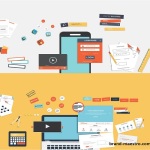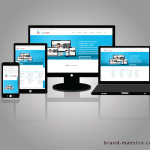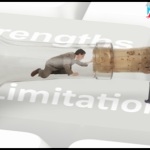Factors to Keep in Mind While Designing Technology For The Seniors
These days the row over the liberation of the Internet is escalating. From the central government to fragile startups, everyone is fighting hard to save the internet. Ever wondered why the issue is hotting up with each passing minute? Why is the fury of consumers, both online and offline, not ebbing away? Because it’s all about equality of the cyberspace, carving it as one unifyingand non-discriminatory platform. Well! That is the fundamental trait of technology. It should be reachable, easy and convenient to every user, even the elderly.
Technology for the Elderly – the issue has never been dealt with the seriousness it requires. It has never caught the attention of many. Let’s face it, we all consider Technology as a subject of the ‘young’. Even the big companies roll out new gadgets and applications for the new crop of people. Who cares for the wrinkled-skin, gray-haired fellows?
Elderly citizens are not techno-geeks, however, it doesn’t make them tech-averse. They love technology and wish to play with it. It is estimated that by 2030, 19% of the senior citizens will be the active tech users. Ageing is a tough phase, but what is more tougher is keeping pace with the fast-growing world and operating high-tech gadgets. As technology makers, companies should understand the sensitivities of old-age. Through this article, we bring to you the four most crucial factors which must be considered while developing technology for the elderly.
Vision and Hearing Difficulties
We say, age is a state of mind. If you think young, you feel young. But, we have no control over the physical changes which are inevitable. Vision and Hearing issues are the most obvious and predictable health problems associated with the aging.
As we reach 40, we start losing our ability to view the objects clearly, which can be remedied using reading glasses and contact lens. The condition is Presbyopia. The capacity to recognize or distinguish colors also dwindles with the age. Floaters and dry eyes are the common issues. Similarly, adults often complain of hearing loss and other complications which make interactions difficult. This makes Technology a maze-like
path difficult to navigate.
The Solution: While creating Technology, the companies should pay special attention to the font sizes and contrast of the content. Whatever the latest product is, check its compatibility with older eyes using screen readers. Give plenty of adjustment options to the such people. As vision is a challenge, provide subtitles to the video and audio content for a quality user experience.
Create For Bigger Devices
Almost 80% of the entire population uses smartphones for carrying out their regular internet-based tasks. The rest of the 20% is the older guys who consider Smartphones as an ‘absurd’ love of the young, the presence of which has eliminated the personal touch. Those who own them doesn’t use them so often.
The elderly are the ‘Technophobes’ when it comes to Smartphones with screens which make readability a Herculean task.To recapitulate, smartphones are for the youngsters and old people dislikes the invention.
The Solution: For better vision, old pals use tablets or desktops. Technology developers should provide content in a way that it can easily get adjusted to any screen size. In the modern-day jargon, it is known as Responsive Website Design. Stop conveying messages using SMSs. They carry no relevance for the oldies and often ignored.
Focus on the Motor Skills
Motor skills are the actions performed by the body due to the movement of the muscles. Such skills are categorized as gross and fine and highly critical for the day-to-day activities in life. With age, the adults experience a serious deterioration of the motor skills and therefore, voluntary movements becomes a hassle. Old folks find it difficult to move the mouse or tap the interfaces due to poor motor control.
The Solution: While designing interfaces, reduce the space between the tappable buttons and arrange them in a perfect and understandable sequence. Deciding on the size of the buttons in vital to address the vision troubles. The button size must be 9.6 millimeters for septuagenarians and larger for those who are in the 80s. Make sure that the interface elements can be operated using a mouse.Furthermore, concentrate on the size of the overall interface design.
Take Note the Memory Gaps
Older adults often face a tough time while recalling a past moment due to poor memory. A greater share of the elderly population suffers from procedural and short-term memory loss. The most important objective of technology is to make lives simpler. Thus, it must offer sufficient indications on how to manage a new-fashioned gadget and application.
The Solution: They shouldn’t feel like they are stuck in a labyrinth of technology which has no escape. The operational framework must be made simpler and easier to remember. Do not challenge them further. Avoid creating long and lengthy tasks and if possible, provide reminders for easy manageability.
Neglecting the old-age chaps will lead the tech-crazy world nowhere. It’s time to make this world easier for them as they need it the most.












Helpful indeed. It’s good to know that the tech-crazy world thinks inside the box sometimes and designs technology exclusively for senior citizens.